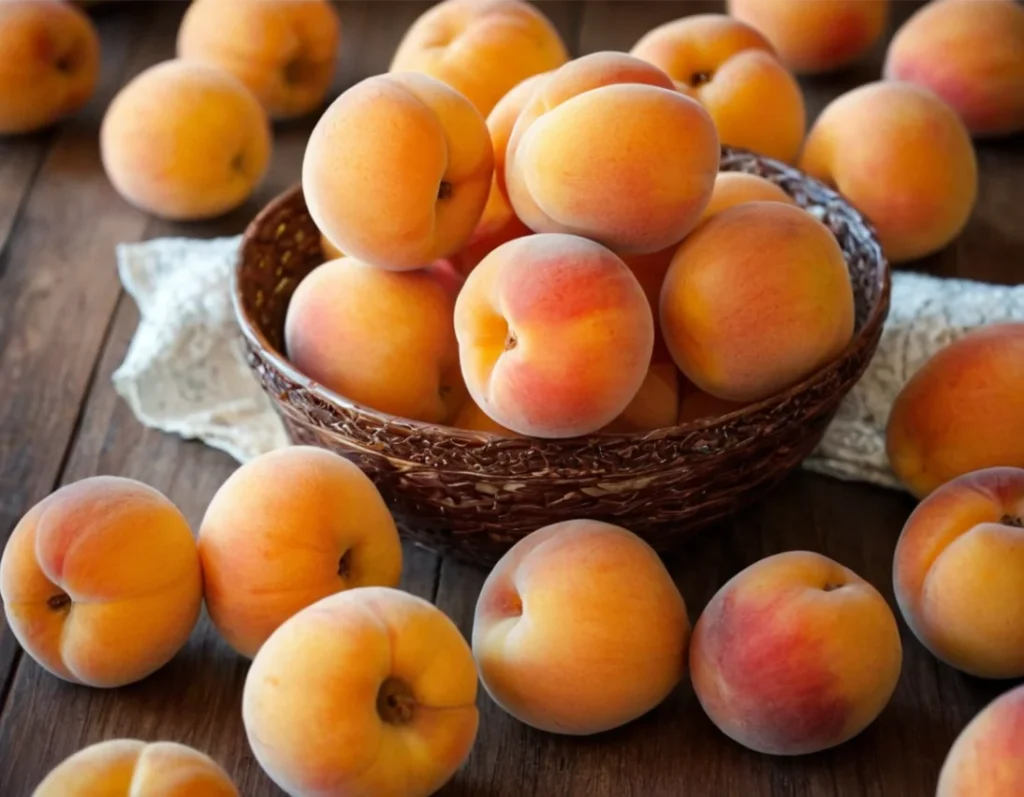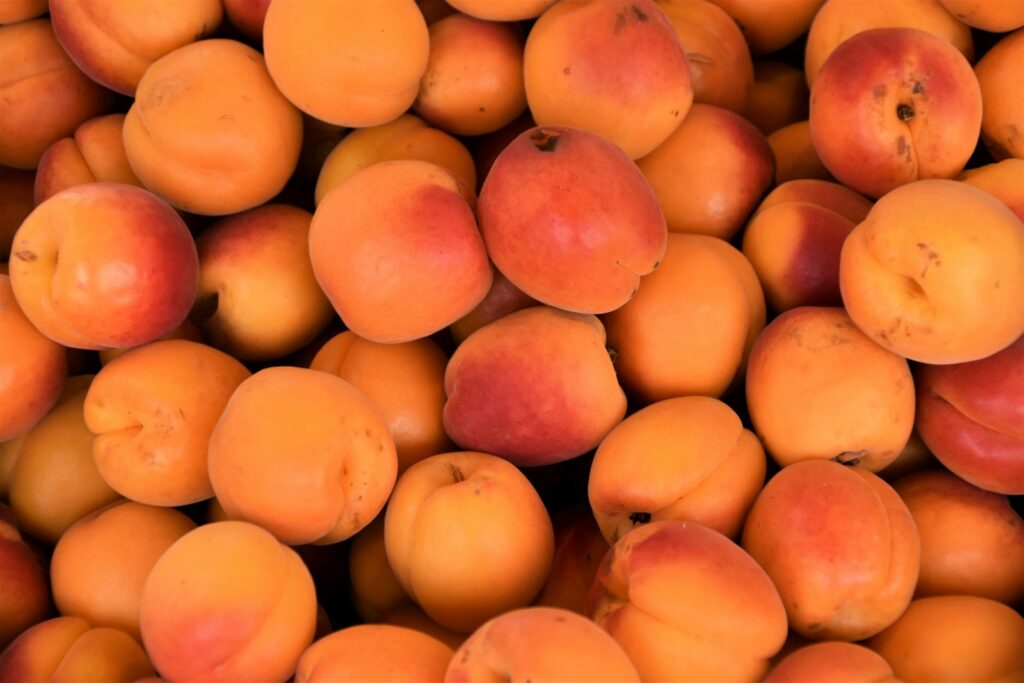12 Facts About Apricots

Bursting with vibrant orange color and sweet, tangy flavor, apricots are one of summer’s most delightful fruits. While their appearance may resemble peaches or plums, apricots have their own unique identity and health benefits that set them apart.
Introduction
Apricots have been enjoyed for over 4,000 years, originating in China before spreading across the world. Today, these fuzzy fruits grace our markets and meals, adding brightness and nutrients. Beyond their luscious taste, apricots offer an array of health perks from boosting immunity to protecting eye health.
Here are 12 juicy facts to sink your teeth into, from cultivation secrets to creative ways to eat apricots. Read on to explore the sweet mysteries of this sun-kissed fruit.
Facts About Apricots

1. Apricots are closely related to peaches and plums
Apricots belong to the same family as peaches, nectarines, cherries, and plums. Known as stone fruits or drupes, they have a fleshy exterior and a large, hard pit at the center. While they share similarities, apricots are smaller, smoother, and more orange than their cousins. Their taste also differs, with apricots bringing a unique sweet-tart flavor.
2. There are over 30 varieties of apricots
From deep orange Golden Sweet apricots to pale orange Tilton apricots, there exists over 30 cultivated varieties. The diverse options range in size, texture, taste, and growing season. For example, Early Golden apricots ripen first in early summer while others like Moongold don’t peak until August. With so many types, you can enjoy apricots all season long.
3. 95% of American apricots come from California
Owing to its hot, dry climate and fertile valleys, California supplies about 95% of apricots in the U.S. Most hail from the San Joaquin Valley which enjoys plenty of sun and cool winters. Turkey, Iran, Italy and Algeria also lead worldwide production.
4. Apricot trees thrive in a specific climate
Apricot trees flourish in regions with cold winters and dry, warm summers. These conditions allow them to accumulate chilling hours in winter for proper bud formation while the heat allows their fruit to fully ripen. Places with extreme winter cold or rainfall can impair growth. The trees also grow well in well-drained, sandy loam soil.
5. Apricot flowers bloom early in the spring
One of the earliest fruit trees to flower, apricots begin blooming in early spring. Their pink and white blossoms sprout before their leaves, making for stunning scenery. However, early blooms also risk damage from unpredictable frosts. Luckily, the fruits are more resilient to cold than the flowers.
6. Apricots can be eaten fresh or dried
Beyond eating them fresh, apricots shine when dried or made into jam. In fact, over 70% of Californian apricots are dried into a sweet, chewy snack. Their rich taste concentrates during drying while vitamins and minerals remain intact. You can also cook apricots into jams, compotes, and sauces for a burst of flavor.

7. Apricots contain powerful antioxidants
Orange fruits and veggies often boast antioxidants, and apricots are no exception. They contain carotenoids like beta carotene along with vitamin C, E, and lycopene. These compounds neutralize free radicals to combat inflammation and cell damage. Such nutrients are found in the skin, so eat your apricots whole!
8. Apricots may support eye health
Thanks to high levels of antioxidants like vitamin A, apricots can nurture your eyes. Vitamin A supports night vision, the cornea, and overall eye health. The beta carotene found in apricots also gets converted into vitamin A in the body. A single fresh apricot has over 10% of your daily vitamin A needs.
9. Apricots may lower heart disease risk
The fiber and antioxidants in apricots make them a heart-healthy choice. Their beta carotene and lycopene fight inflammation to protect blood vessels and cholesterol levels. And their fiber scrubs out arteries while regulating blood pressure and glucose levels. Together, these effects may lower your risk of heart disease.
10. Apricots contain nutrients for skin health
For smooth, glowing skin, look to apricots. Vitamin C stimulates collagen growth for firm skin while vitamin E and beta carotene shield against UV damage. Lycopene also protects skin from the sun’s rays. With regular consumption, these nutrients may help decrease wrinkles and sunburn risk.
11. Apricots boast gut-friendly fiber
Soluble and insoluble fiber join forces in apricots to support digestion. Pectin and other soluble fibers make a gel that slows nutrient absorption and digestion, controlling blood sugar and cholesterol. Meanwhile insoluble fiber moves through intact, promoting regularity. Together, they feed good gut bacteria as well.
12. Apricots make great additions to recipes
Beyond snacking on them raw, apricots shine in recipes too. Blend them into smoothies, fold them into oatmeal or chia pudding, or skewer them for grilling. You can also bake them into tarts, crumbles, and galettes. For a savory twist, try them in salsas, chutneys, or glazes for meats. Dried apricots also add a chewy contrast to salads and grain bowls.
Conclusion
With their sweet nectar flavor and tender golden flesh, apricots captivate tastebuds and provide a bounty of nutrition. These fuzzy fruits hold over 4,000 years of history while still feeling new and exciting. Apricots not only taste delicious but also deliver a trove of health benefits from eye care to glowing skin. With so many impressive facts under their thin skins, apricots prove they should not be overlooked when summer produce shines.

Apricot FAQ
What is the scientific classification of the apricot?
The apricot belongs to the Kingdom Plantae, Clade Tracheophytes, Clade Angiosperms, Clade Eudicots, Order Rosales, Family Rosaceae, Genus Prunus, and Subgenus Prunus subg. Prunus.
What is the etymology of the word “apricot”?
The word “apricot” originated from Latin via Late and Byzantine Greek to Arabic, Spanish and Catalan, Middle French, and eventually to English. It first appeared in English in the 16th century as “abrecock” from the Middle French “aubercot” or later “abricot,” derived from Arabic الْبَرْقُوق (al-barqūq).
What are some common species of apricots?
Common apricot species include Prunus armeniaca, Prunus brigantina, Prunus cathayana, Prunus mume, Prunus sibirica, and others belonging to Prunus sect. Armeniaca.
Where is apricot cultivation practiced?
Apricot cultivation is practiced in various regions, including Central Asia, China, Japan, Europe, North Africa, and South Asia. Notably, Malatya is the center of Turkey’s apricot industry.
What are some cultural associations with apricots?
Apricots hold cultural significance in various regions. For instance, they are the national fruit of Armenia and are associated with education and medicine in Chinese culture. In Middle Eastern and North African cuisines, apricots are used to make Qamar al-Din, a popular drink during Ramadan.





